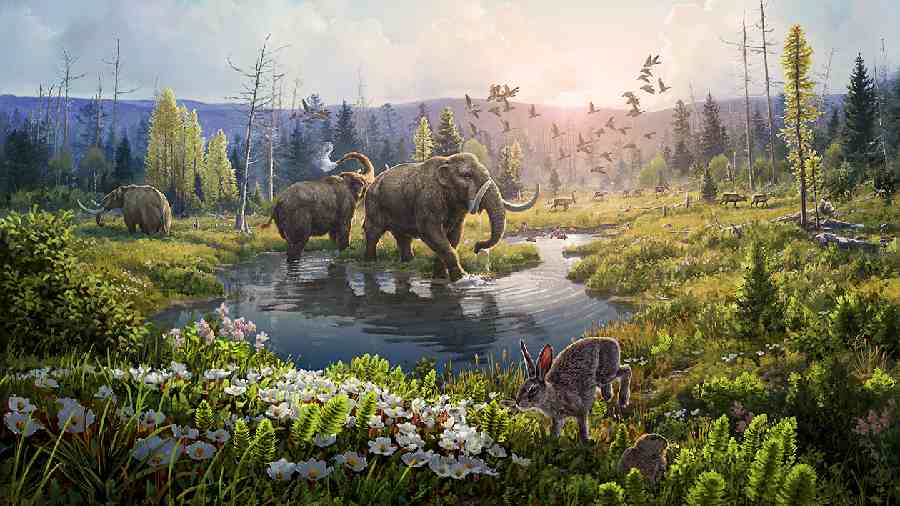Two-million-year-old genetic material extracted from a polar desert in northern Greenland has shown that the island was once a unique forest rich with herbs and trees and populated by extinct elephants, reindeer and hares among other creatures.
Scientists announced on Wednesday that they have extracted and sequenced the oldest yet fragments of DNA found in clay and quartz from 41 sediment samples rich in organic materials and preserved at Kap Kobenhavn, a coastal corner in northern Greenland.
The DNA fragments had been preserved undisturbed under ice or permafrost for two million years, a 38-member research team from 10 countries said, describing their findings in the journal Nature.
“For the first time, we can look at DNA of an ecosystem that far back in time — further back in time than anyone could have dared imagine,” said Eske Willerslev, an evolutionary geneticist and fellow at the St John’s College, University of Cambridge, who led the study.
The previous oldest DNA extracted to date was from a mammoth molar in Siberia dated as 1.2 million years old.
The scientists analysed the DNA fragments from the sediments, comparing them with DNA libraries, and found evidence — DNA signatures — of microorganisms, animals and plants, including reindeer, hares, lemmings, birch and poplar trees and mastodon, an extinct ice-age elephant.
The study found evidence for 102 plants in the ancient DNA but 39 per cent of the plants no longer grow in Greenland.

Present-day landscape at Kap Kobenhavn. Credit: Kurt Kjaer
Ancient climate records show that Greenland at the time was 11 to 17°C warmer than at present, making possible the rich forest ecosystem.
The unique mix of the Arctic and north temperate boreal species in the two-million-year-old ecosystem has no modern-day equivalent, the scientists said.
“We don’t find this extraordinary composition of species anywhere on Earth today,” Mikkel Pedersen, a paleoecologist at the University of Copenhagen and team member, told The Telegraph.
The discovery, he said, provides fresh, unprecedented insights into how species can adapt to warmer climates.
Although warmer, Greenland two million years ago was where it is on the globe today and experienced long winter nights with darkness lasting months and short summers with little sunlight. Yet, the DNA record shows evidence of plant species that won’t survive there today.
“This was another surprise — how did they survive through the long winter nights?” said Pedersen.
Scientists speculate that the DNA comes from ancestral species of plants that had the capability to adapt to Greenland’s climate at the time. The findings indicate that species can evolve and adapt to large changes in temperatures. However, Pedersen said, the results also show that species need time to do this.
“The speed of global warming today means organisms and species don’t have the time — which means the climate emergency remains a huge threat.”
Scientists from Australia, Canada, Denmark, France, Germany, Norway, Russia, Sweden, the UK and the US were members of the team.











